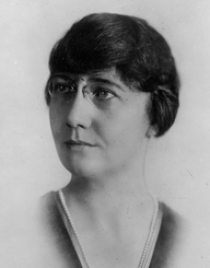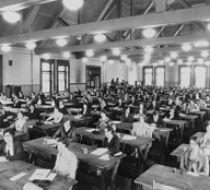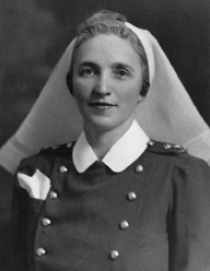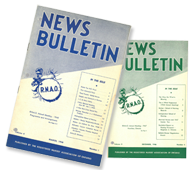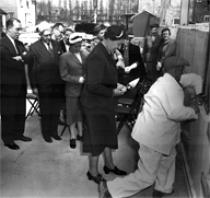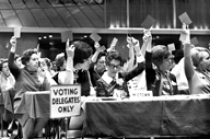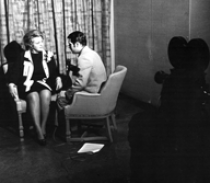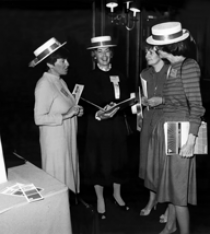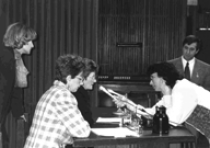2000 RNAO lobbies for – and welcomes – the announcement of the new chief nursing officer position created by the provincial government as part of its senior management team.
2000 The association launches Take your MPP to Work, which allows political leaders to hear first- hand from nurses.
2002 RNAO endorses the final report of the Romanow Commission, Building on Values: The Future of Health Care in Canada.
2003 RNAO reschedules its 78th AGM due to the Severe Acute Respiratory Syndrome (SARS) outbreak, which took lives of 44 Ontarians, including two nursing colleagues. RNAO delivers a formal request to Premier Ernie Eves asking Ontario to order an independent commission of inquiry under the Public Inquires Act into the SARS outbreak. RNAO leads, in collaboration with RPNAO, VIANurse, an electronic registry, maintained confidentially on RNAO's website, of RNs and RPNs who are willing to be voluntarily immediately available for deployment to an Ontario health-care facility that has been deemed emergency status. On September 29, RNAO releases SARS Unmasked: Celebrating Resilience, Exposing Vulnerability: A Report on the Nursing Experience with SARS in Ontario.
2003 RNAO launches its Best Practice Spotlight Organization (BPSO) program. This project is a three-year partnership between selected organizations and RNAO, sponsored by the Ministry of Health in support of implementation and evaluation of BPGs.
2005 In January, RNAO, with the University of Ottawa’s School of Nursing, launch the Nursing Best Practice Research Unit (NBPRU). The NBPRU, now called the Nursing Best Practice Research Centre, strives to promote nursing excellence through the study of the best strategies to promote the uptake of research results in all aspects of nursing care and the nursing work environment.
2005 RNAO receives funding from the Ministry of Health to develop a strategic plan to enhance nursing contributions to innovations in health care related to electronic applications, now known as the e- Health Project.
2005 As of this year, all Ontario RNs must have a baccalaureate degree. RNAO had formally endorsed this requirement for more than two decades, and proposed the change in legislation to Ontario political leaders.
2006 RNAO celebrates its new building on Toronto’s Pearl Street with an open house. Over 100 RNAO members, politicians and members of the media attend. The government also announces a Retention Trust Fund to be managed by RNAO, ONA, and RPNAO.
2007 The first nurse practitioner-led clinic is launched in Sudbury under the leadership of NPs Marilyn Butcher and Roberta Heale. On August 30, Ontario’s Minister of Health George Smitherman attends the official grand opening of the clinic, with RNAO’s executive director in attendance.
2009 RNAO hosts John Gerretsen, Minister of the Environment, MPPs, environmental, and health activists to celebrate the introduction of the most progressive cosmetic pesticide regulations in North America. RNAO was pivotal in helping to enact these regulations.

